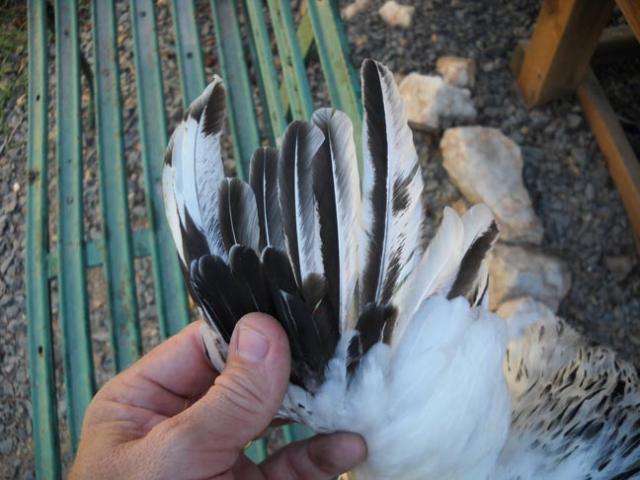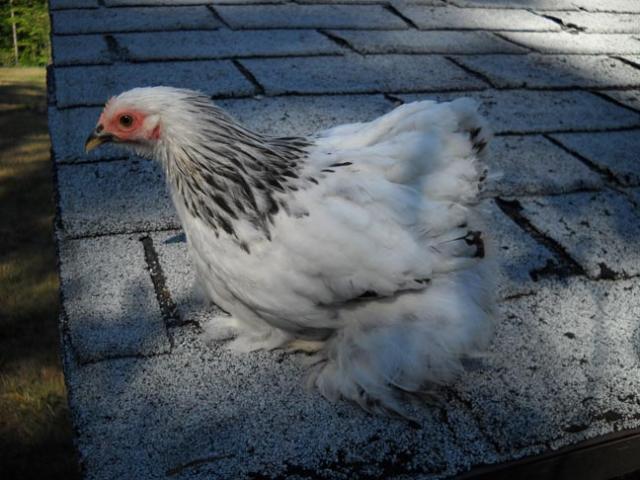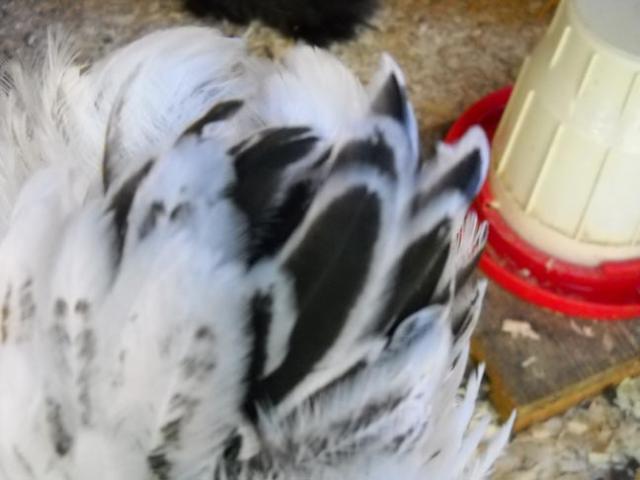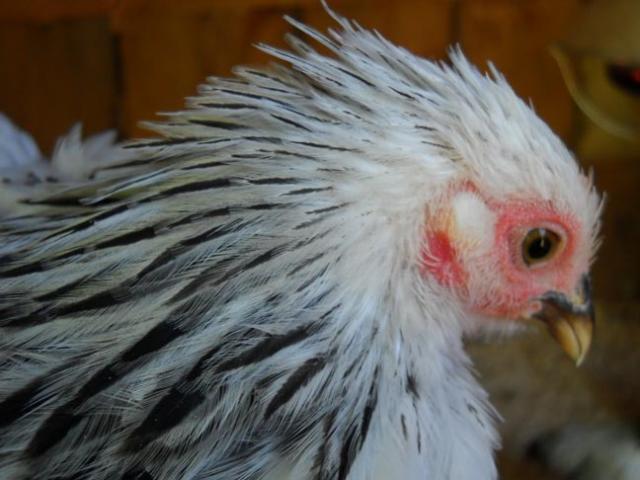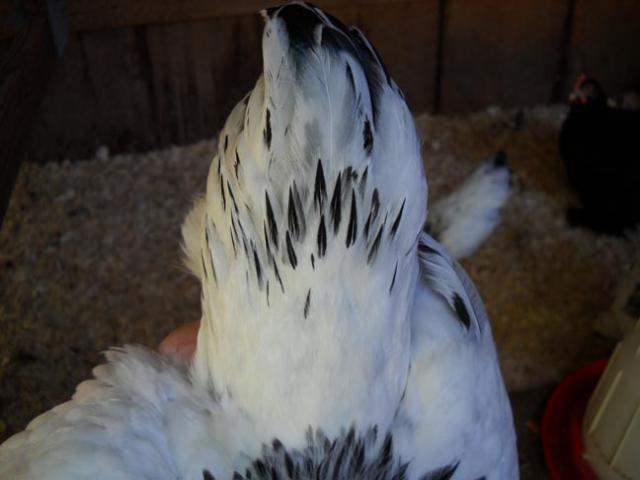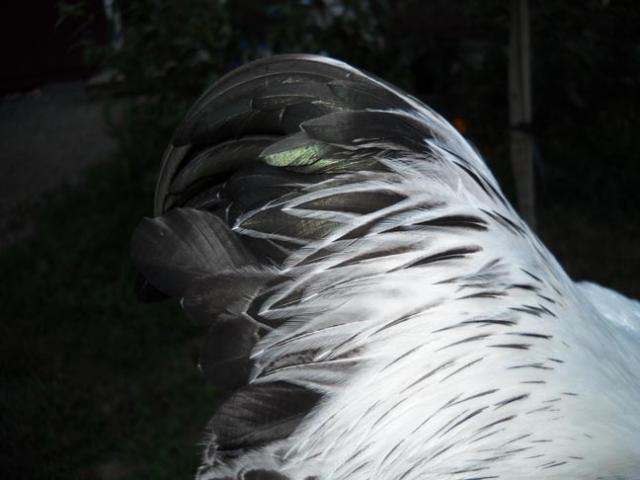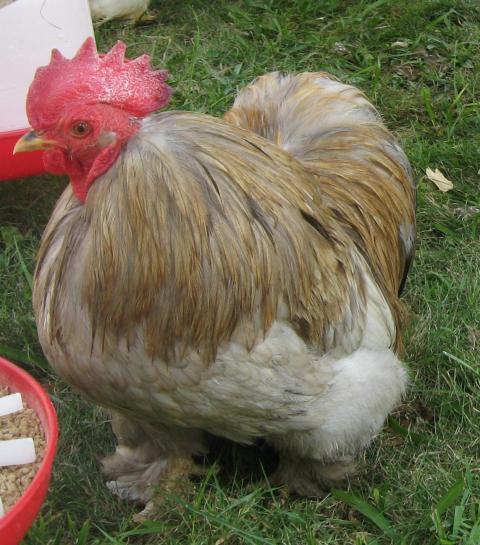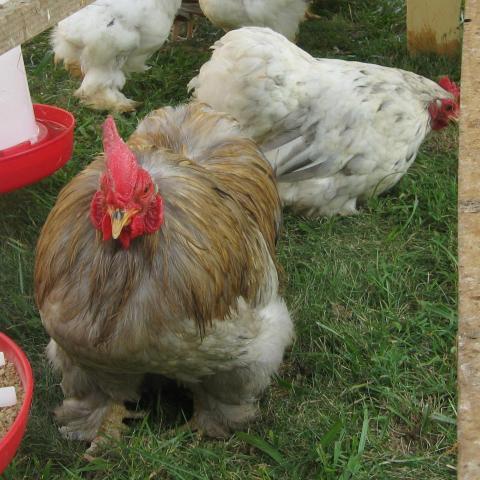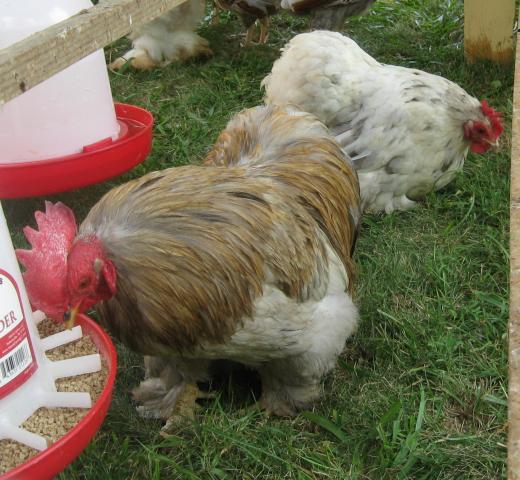For the post that stated Columbian Cochins should resemble Columbian Wyandottes in color the answer is yes, but I wouldn't call it hints of Black. There are distinct markings that they are supposed to have. "hints" to me would mean that they are way undermarked.
I took some photos last night to provide examples of poor and acceptable markings.
Poor wing (primaries) marking. This is a Cochin Ckl.
Acceptable hackle marking. Columbian Pullet about 3 months old. Although her wings are poorly marked.
Decent Tail Coverts (Plymouth Rock Pullet)
Acceptable Tail Coverts (Cochin Pullet)
Not well defined hackle and it goes too far up toward her head. Same Cochin pullet as previous picture.
Same Cochin Pullet. Back is fairly clean, but showing a little ticking, and you can see that the hackle markings go too far up her neck toward the head. However, this a very nice typed pullet, and you have to weigh that against the color flaws and go from there.
Fairly well marked hackle on a Plymouth Rock cockerel.
Same Plymouth Rock Cockerel. Saddle markings are starting to come in and you can see the distinct white across the back. Patterned hackle, crisp white back and then the saddle marking picks up. However, he's showing some white in the middle of his saddle markings already, which is a common flaw. We'll see how he winds up in the type department.
Well marked hackle on a Wyandotte Cock bird.
Saddle on same Wyandotte male.
And finally that same Wyandotte viewed from above. He is pretty well marked although he does show a bit of White on his two main sickles. He's a 3 year old bird and that is to be expected as they age.




